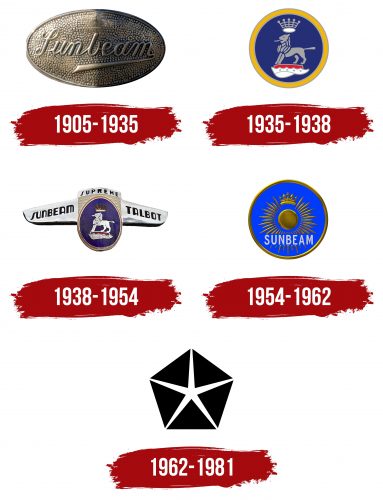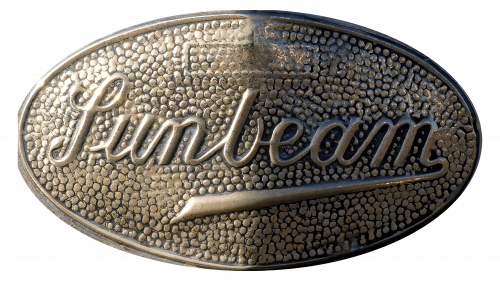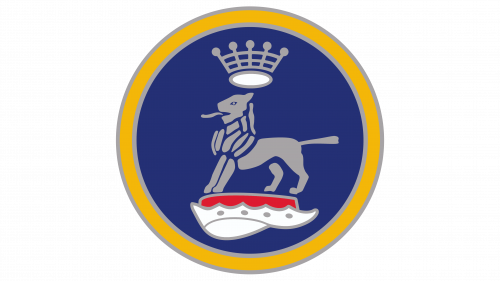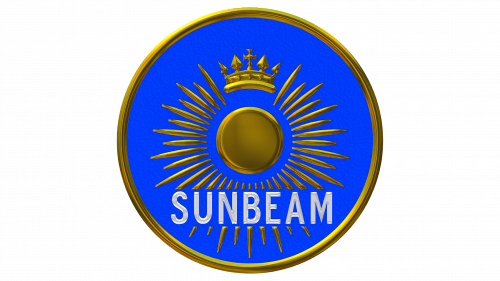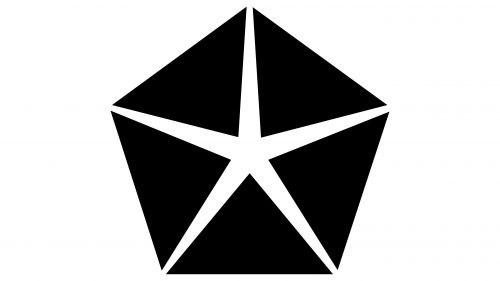The Sunbeam logo embodies the evolution from exclusivity to modesty. The original emblem faded away, just like the company it represented. Now, it reminds us that incredible dedication is required before we can receive any return from the environment.
Sunbeam: Brand overview
The successful enameled product producer John Marston established Sunbeam Cycle Co Ltd. in Wolverhampton, England, in 1887, marking the beginning of the company’s history. The business first concentrated on making bicycles, which were known for their excellent quality and dependability.
The manufacturer started experimenting with making motorcycles in 1899, and the business unveiled its first automobile, the two-seater Sunbeam-Mabley, in 1901. It had an odd design, with the engine beside the driver.
The company reached a major turning point in its history in 1905 when it began manufacturing more conventional cars. The first of these models was the Sunbeam 12/16, which had a four-cylinder engine and was renowned for its excellent craftsmanship.
The company’s first significant motorsport victory came in 1912 when their car broke multiple speed records at the Brooklands racetrack. This was the start of a lengthy and fruitful history of involvement in motor racing.
Like many other British businesses, the manufacturer turned to producing military hardware during World War I, such as armored cars and aircraft engines.
After the war, the company resumed making civilian automobiles and continued its successful motorsport career. In the 1920s, the business produced several popular racing vehicles, including the well-known Sunbeam 350HP, which 1924 set a new land speed record of 146.16 mph.
In 1920, Sunbeam merged with Talbot and Darracq to form STD Motors. This merger allowed the company to grow its output and penetrate new markets.
The manufacturer faced difficulties during the 1930s due to the Great Depression. 1935, the business filed for bankruptcy despite producing popular models such as the Sunbeam Dawn.
A new era for the brand began in 1935 when the Rootes Group purchased the company. Under Rootes’ direction, Sunbeam started manufacturing more models for the mainstream market.
The sporting legacy was revived in the 1950s. 1953, the business debuted the Sunbeam Alpine, a sports roadster that gained popularity in export markets and the UK.
The Tiger, one of the most well-known automobiles, was introduced in the 1960s. This Ford V8-powered sports car was in the same league as the AC Cobra.
The Sunbeam nameplate was gradually phased out after Chrysler Corporation acquired the Rootes Group in 1967. The Sunbeam Rapier was the final new model, released in 1967.
The 1970s were the brand’s last decade as an automobile manufacturer. Chrysler replaced the Sunbeam moniker with its brand and progressively stopped using it.
The Chrysler Sunbeam, which was effectively a renamed Chrysler Avenger, was the vehicle that carried the Sunbeam name for the final time in 1976.
The brand was discontinued in 1978 when Chrysler sold its European business to PSA Peugeot Citroën. The Sunbeam brand was chosen to be retired by the new owners.
Many Sunbeam vehicles, especially the sports cars from the 1950s and 1960s, are highly prized for their performance and design.
Meaning and History
What is Sunbeam?
It is a famous British automaker that played an important role in the early development of the British automobile industry. The company started by manufacturing motorcycles and bicycles before deciding to venture into automobiles. Car enthusiasts worldwide have praised the cars’ elegance, performance, and craftsmanship, especially the Sunbeam Alpine and Tiger models. The company’s reputation for engineering excellence has been reinforced by its success in motorsports, including winning land speed records and Grand Prix races. Throughout its history, the company faced financial difficulties and changes in ownership despite its renowned products. Eventually, the company was acquired by the Rootes Group.
1905 – 1935
The Sunbeam emblem, with its oval shape and metallic texture, conveyed the reliability of the company’s cars. It effectively complemented racing and luxury cars, impressing with its horizontal ellipse. Inside, on a convex part (like a small elevation), the name of the British brand was displayed, and the logo resembled a badge.
The name was rendered in a script-style font, mimicking a personal signature. The calligraphically smooth letters made a pleasant impression, being smooth and sans-serif. For better readability, they were made semi-bold. This gave the text a noble, elegant, refined look, reminding buyers that the company manufactured luxury cars.
The last letter had a formal tail, elongating and curved to the left, emphasizing the other glyphs. The start of this stroke (at the “m”) was narrow, while the end (under the “n”) was wide. The “S” also drew attention; its winding form was complemented by two curls, making it resemble an uppercase handwritten “L.” The lowercase “b” stood out as well, appearing open due to the missing top element.
The emblem’s unique style showed that the manufacturer produced exclusive models distinguished by comfort, attractiveness, and security. It conveyed a sense of calm and confidence to onlookers, while the metallic texture indicated the vehicles’ high durability, signifying their ability to withstand any operating conditions.
1935 – 1938
After the successful start of car production, the “royal” era began, reflected in the Sunbeam logo. It indeed featured symbols of supreme authority – a lion and a crown. These elements were harmoniously combined, conveying the imperial nature of the company:
- The place of origin (Great Britain – the land of kings)
- A successful career (popularity of racing and luxury cars)
- Authenticity (belonging to royal “blood”)
Designers embodied the company’s DNA in the emblem: its connection to a country where royal customs, tastes, and traditions prevail. The mythical animal was depicted standing on a pedestal. It had a proudly raised head, a protruding tongue, and a straight tail. The lion symbolized strength, bravery, power, magnanimity, courage, and perfection, qualities the manufacturer endowed its vehicles with. This image characterized them as fit for royalty.
Above the regal beast’s head was a large crown – another symbol of supreme authority. It affirmed the noble status of Sunbeam cars, showing that they were undisputed leaders in their sector. The bottom part of the crown resembled a halo, hinting at the vehicle’s technical perfection and angelic nature – easy handling, quick responsiveness, and smooth driving without any issues.
The heraldic lion stood on a pedestal composed of two parts: a red base and a white jagged ornament reminiscent of part of a mantle. The animal was placed in the center of a blue circle with triple edging: the outer and inner frames were thin and gray-blue, and the middle one was wide and yellow. In Great Britain, blue has always been directly associated with royalty, symbolizing stability, confidence, authority, trust, and serenity.
1938 – 1954
The version with the heraldic lion received additional attributes, making the logo significantly larger. Designers retained the regal animal on a blue background but transformed the circle into a vertical oval, giving it a medallion-like appearance. The gray color became distinctly silver, adding nobility to the emblem. All former gray-blue elements were colored silver: the lion, part of the crown, the border, and the drape at the bottom.
Among the additional details, the wings stood out the most, as they were positioned on either side of the oval. Thus, the royal lion acquired features of the Scythian lion – a winged mythical creature, a cross between a lion and an eagle, symbolizing speed, sharp vision, endurance, and unparalleled strength.
The inscription “Sunbeam Talbot” was on the protruding elements in an extra-bold, rectangular font with rounded edges. All letters were uppercase, sans-serif, with soft features, lacking both serifs and angles. Above them was the word “Supreme,” showcasing the high status of the brand. This word occupies the topmost line of the logo. Its distinctive feature was the absence of the inner space in the uppercase “R,” though readability remained unaffected.
Additionally, the emblem included several broad stripes overlaid by the medallion with the lion. These stripes were wide and golden, separated by thin silver lines. The crown above the heraldic animal’s head was golden, now adorned with red rubies.
1954 – 1962
During this period, the era of the lion ended, and the era of the sun began. The golden sun “shone” for a long time on a blue background. It occupied almost the entire central part and was designed very originally. In the middle was a circle resembling a metallic plate sparkling with reflections. Long and short rays alternated, radiating outward from this circle. Like the circle, they were golden and shiny.
The name of the British company crossed the bottom, written in tall, grotesque uppercase letters. The balanced ratio of angles and rounded elements in the glyphs reflected a thoughtful approach to car manufacturing, indicating the company’s attention to detail and consideration of every nuance. The strict style of the inscription, with wide spacing between characters, also conveyed this message. The white letters had unique “overlays,” as if the paint on the ends of the glyphs had slightly peeled off. This effect, achieved through a gradient, enlivened the logo and made it realistic.
Above the sun was a crown, presented in a different style: now it featured peaks and a large Celtic cross. A blue circle served as the background for all these elements, symbolizing the pursuit of perfection and a connection to the automotive industry, as it resembled a wheel and steering wheel. Around the edge was a border in the same color as the sun. This border was three-dimensional and medium in thickness. All other details of the emblem were also embossed.
1962 – 1981
The sun theme remained but took on a different design. It was depicted as a radiant star, spreading light in all directions. The white rays converged in the center and were open-ended, extending beyond the composition without any borders. This symbolized the company’s openness and effort to gain car enthusiasts’ trust, as it was experiencing a crisis it couldn’t overcome. The redesign did not yield positive results.
The logo was two-dimensional and monochromatic. However, beneath its simple appearance lay considerable complexity: the emblem consisted almost entirely of five black isosceles triangles, creating the effect of sun rays spreading in different directions in the negative space. Restraint, strictness, and two-dimensionality were the key characteristics of the emblem during this period. It lacked authenticity, the sun was abstract, and the colors were monotonous. Even then, it signaled the company’s decline.

